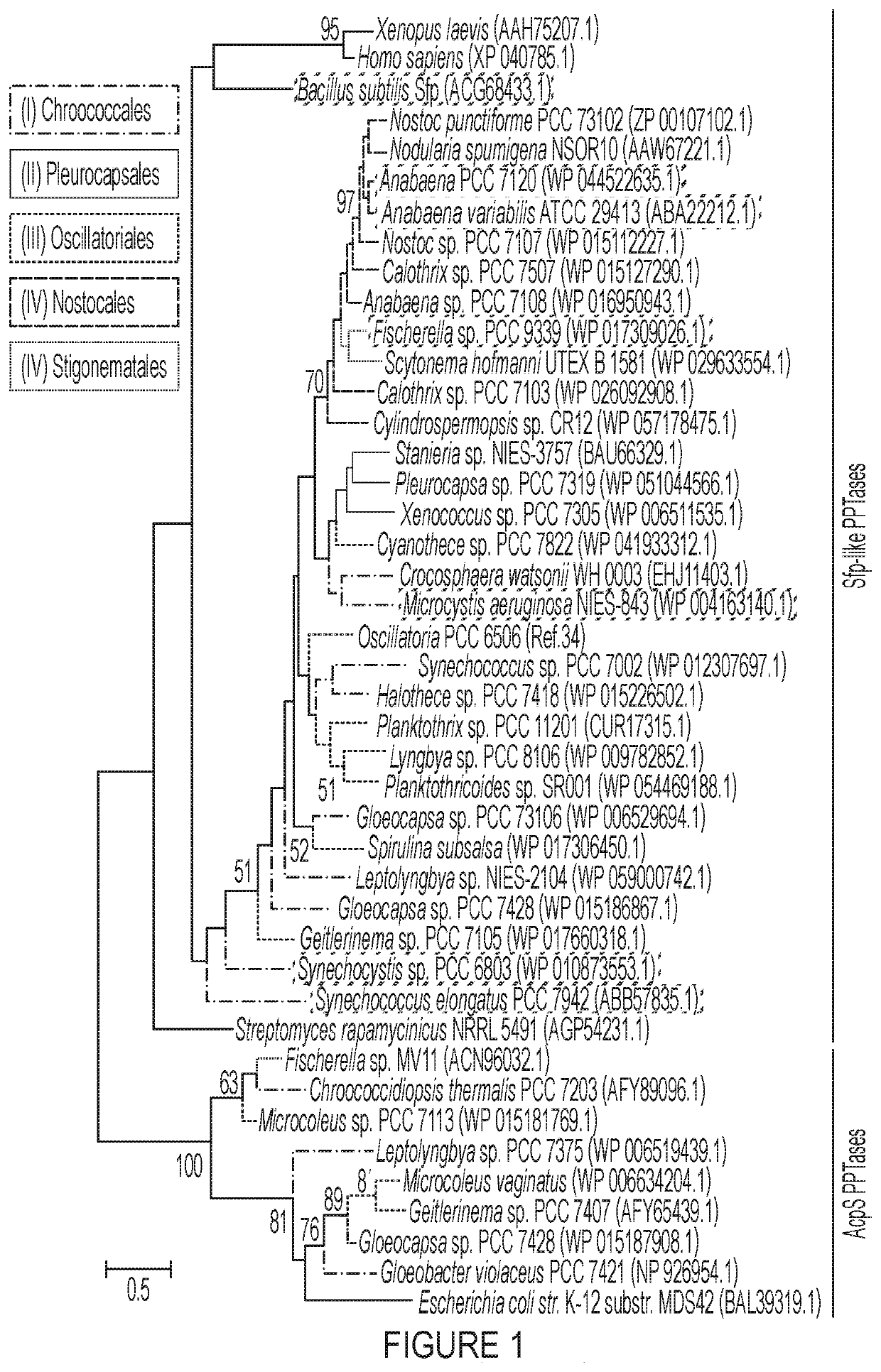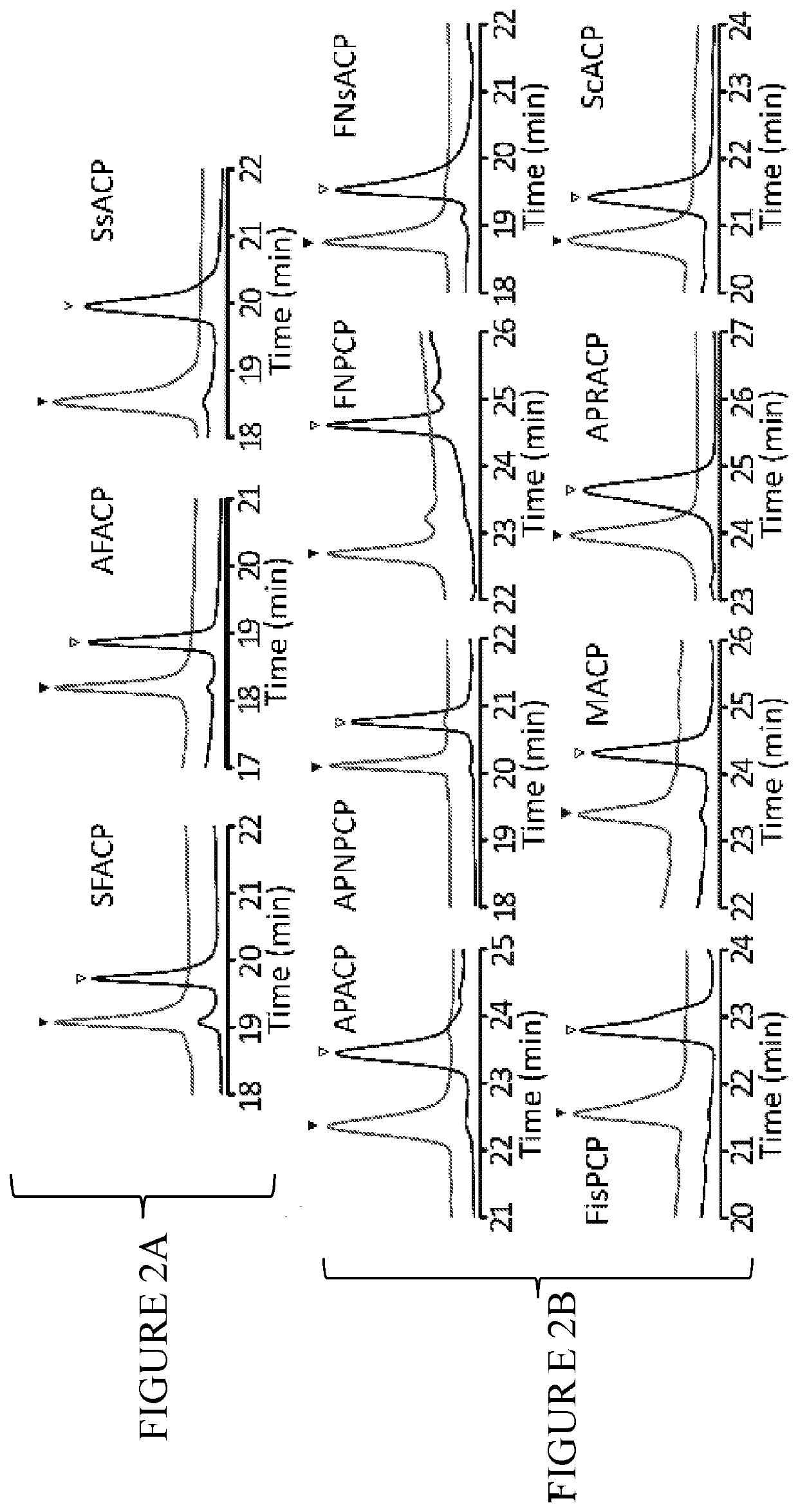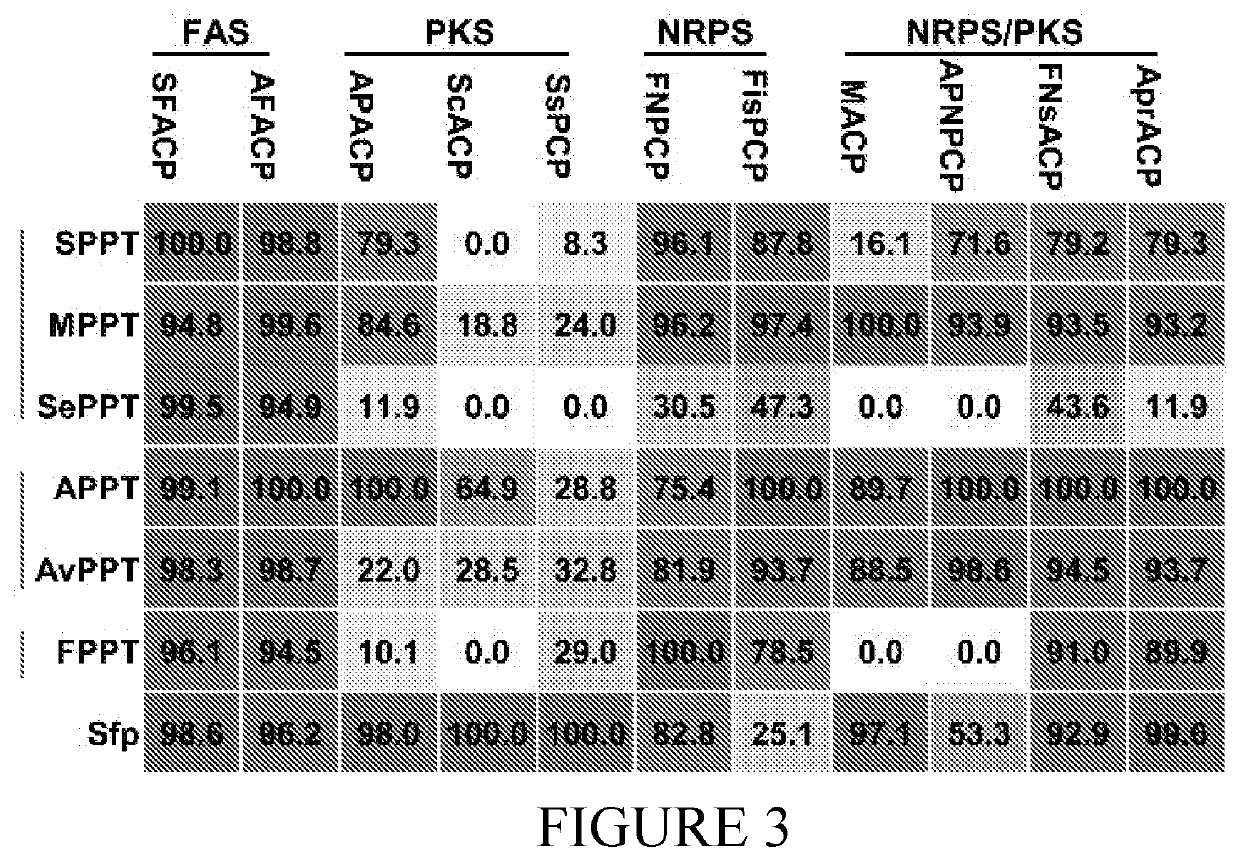Cyanobacterial hosts and methods for producing chemicals
a technology of cyanobacteria and hosts, applied in the field of cyanobacteria hosts and methods for producing chemicals, can solve the problems of poorly characterized cyanobacteria sfp-like pptases and pose a significant barrier to the exploitation of cyanobacteria
- Summary
- Abstract
- Description
- Claims
- Application Information
AI Technical Summary
Benefits of technology
Problems solved by technology
Method used
Image
Examples
example 1
Methods
Reagents and Chemicals
[0095]Restriction enzymes, Taq DNA polymerase and Phusion DNA polymerase were purchased from Thermo Scientific. Chemicals and solvents were from Sigma Aldrich, Fisher Scientific or RPI Corp (USA). The GeneJET Plasmid Miniprep Kit, PCR Purification Kit and Gel Extraction Kit were from Thermo Scientific. Oligonucleotide primers were synthesized by Sigma Aldrich, while codon-optimized Sfp gene was obtained from GenScript. DNA sequencing was performed at Eurofins.
Strains and Culture Conditions
[0096]Escherichia coli DH5α and BL21-CodonPlus (DE3) RIPL were used for routine molecular biology studies and protein expression, respectively, and were grown in Luria-Bertani broth or Terrific broth. Synechocystis sp. PCC6803, Anabaena sp. PCC7120, Anabaena variabilis ATCC29413, Fischerella sp. PCC9339, Microcystis aeruginosa NIES-843, and Synechococcus sp. PCC7942 were purchased from UTEX or NIES (Japan) and cultured in BG11 medium with CO2 bubbling. All cyanobacteria...
example 2
[0127]Mycosporine-like amino acids (MAAs) are water-soluble secondary metabolites produced by a variety of marine organisms including cyanobacteria and macroalgae. These compounds have strong ultraviolet (UV) absorption maxima between 310 and 362 nm and are biological sunscreens for counteracting the damaging effects of UV radiation. Shinorine is one MAA analog and is the key active ingredient of sunscreen creams. Commercially used shinorine is isolated from a red algae that is harvested from the wild. Synechocystis sp. PCC6803 as a novel host for the heterologous production of shinorine is described. A shinorine gene cluster was mined from the filamentous cyanobacterium Fischerella sp. PCC 9339. When expressing the cluster in Synechocystis sp. PCC6803, LC-MS analysis detected the production of shinorine but its productivity was three times lower than the native producer. Integrated transcriptional and metabolic profiling identified multiple rate-limiting steps in the heterologous p...
PUM
| Property | Measurement | Unit |
|---|---|---|
| Fraction | aaaaa | aaaaa |
| Fraction | aaaaa | aaaaa |
| Fraction | aaaaa | aaaaa |
Abstract
Description
Claims
Application Information
 Login to View More
Login to View More - R&D
- Intellectual Property
- Life Sciences
- Materials
- Tech Scout
- Unparalleled Data Quality
- Higher Quality Content
- 60% Fewer Hallucinations
Browse by: Latest US Patents, China's latest patents, Technical Efficacy Thesaurus, Application Domain, Technology Topic, Popular Technical Reports.
© 2025 PatSnap. All rights reserved.Legal|Privacy policy|Modern Slavery Act Transparency Statement|Sitemap|About US| Contact US: help@patsnap.com



